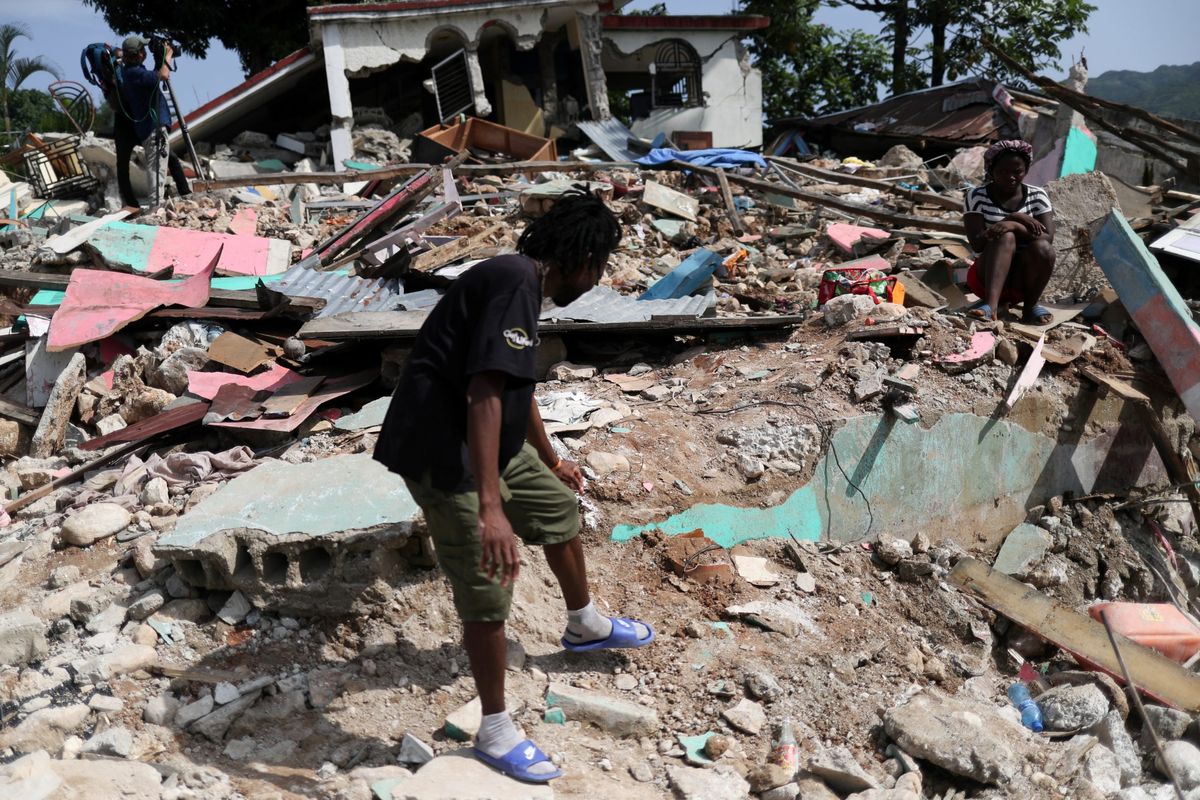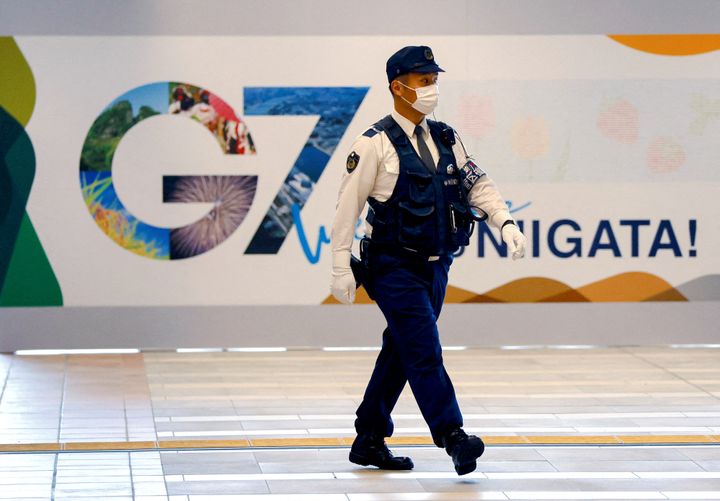A presidential assassination, an earthquake and a tropical storm: Haiti’s struggles continue

A few minutes every morning is all you need.
Stay up to date on the world's Headlines and Human Stories. It's fun, it's factual, it's fluff-free.
On August 14, a 7.2 magnitude earthquake hit Haiti’s southern peninsula, the same area that was still recovering from the 2010 earthquake, which killed around 250,000 people and injured over 300,000.
What happened with the Haitian president?
- On July 7, Haiti’s President Jovenel Moïse was assassinated in his home in Port-au-Prince.
- According to the Haitian police, the assassination was carried out mostly by people who live outside of Haiti, including two Haitian Americans and 26 Colombians, all of whom were mercenaries (armed civilians paid to do military operations in a foreign conflict zone).
- It was claimed to be led by a man named Christian Emmanuel Sanon, a Haitian doctor who lived in Florida, but arrived in Haiti in June with “political motives.”
- After the assassination though, it was also unclear who was meant to be in charge. Generally, the person who would take over would be the president of the Supreme Court, but he had died just a month before the assassination and a new one had not been named.
- So, the expectation was that the prime minister would take over, but that was also complicated because there was an interim prime minister, Claude Joseph, and the upcoming one, Ariel Henry, who were both fighting over the position.
- Eventually Joseph stepped down, and Henry was appointed the new prime minister.
What about the earthquake?
- On August 14, a 7.2 magnitude earthquake hit Haiti’s southern peninsula, the same area that was still recovering from the 2010 earthquake, which killed around 250,000 people and injured over 300,000.
- After the earthquake on August 14, at least 2,189 people were killed and more than 12,000 people were injured.
- The relief effort has also been complicated, with the road that goes from Port-au-Prince to areas affected by the earthquake plagued by gangs that have stolen most of the relief supplies intended for the injured and homeless.
- The United States, United Nations and a number of international aid groups have been working on sending aid, but that aid has been limited to people needing urgent help in places near air strips.
- In May of this year, the US named the USAID Administrator Samantha Power, as the senior US official to coordinate the effort in Haiti.
- “Through USAID, we are supporting efforts to assess the damage and assist efforts to recover those who were injured and those who must now rebuild,” read a White House statement on the subject. “The United States remains a close and enduring friend to the people of Haiti, and we will be there in the aftermath of this tragedy.”
And, a tropical storm?
- Just days after the earthquake, Tropical Storm Grace rushed through the country, worsening the already catastrophic situation.
- People left homeless by the earthquake were forced to stay in schools or under makeshift tarp shelters.
- The rain brought flash flooding with it too, washing through the homes that had stayed up, and destroying what was left of the ones that had been destroyed during the earthquake.
- The tropical storm also disrupted the air traffic that the US Coast Guard and humanitarian groups had been using to bring aid to the southern part of the country.
- “In a situation like this, you feel you’re powerless,” said Archdeacon Abiade Lozma, an Anglican archdeacon based in the south of the country to The New York Times. “Many people are in need and there’s nothing you can do.”
How bad is it?
- It’s very, very bad.
- Haiti had already been hit hard by the pandemic before all of this happened, and only has about 20,000 people vaccinated so far, so the fear of a COVID-19 outbreak during this already difficult time is a real one.
- And, according to accounts on the ground, Haitian authorities have been practically nonexistent throughout the relief effort.
- This seems to be in large part due to the sectors of the government that simply don’t exist at the moment, which includes a president, a president of the Supreme Court or a national Legislature.
What’s next?
- With somewhat consistent weather now, foreign aid groups are now able to fully launch their relief efforts.
- Prime Minister Henry has also said that moving forward, aid would be handled by a single center in the nation’s capital, because a lot of relief supplies were previously stolen or destroyed, or it was redundant in some places while barren in others.
- “We are setting up a task force to coordinate the aid, so that what happened on January 12, 2010, is not repeated again,” said Henry.
- Elections will eventually need to be held to fill the presidency, as well as to allow the legislature to return, but it isn’t clear how that might go.
- The last election saw President Moïse elected by 600,000 people. This is compared to the country’s population of 11.5 million.
- When it comes to relief, things will likely improve. But when it comes to politics, that isn’t so clear.
Have a tip or story? Get in touch with our reporters at tips@themilsource.com




Comments ()